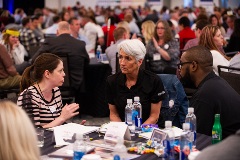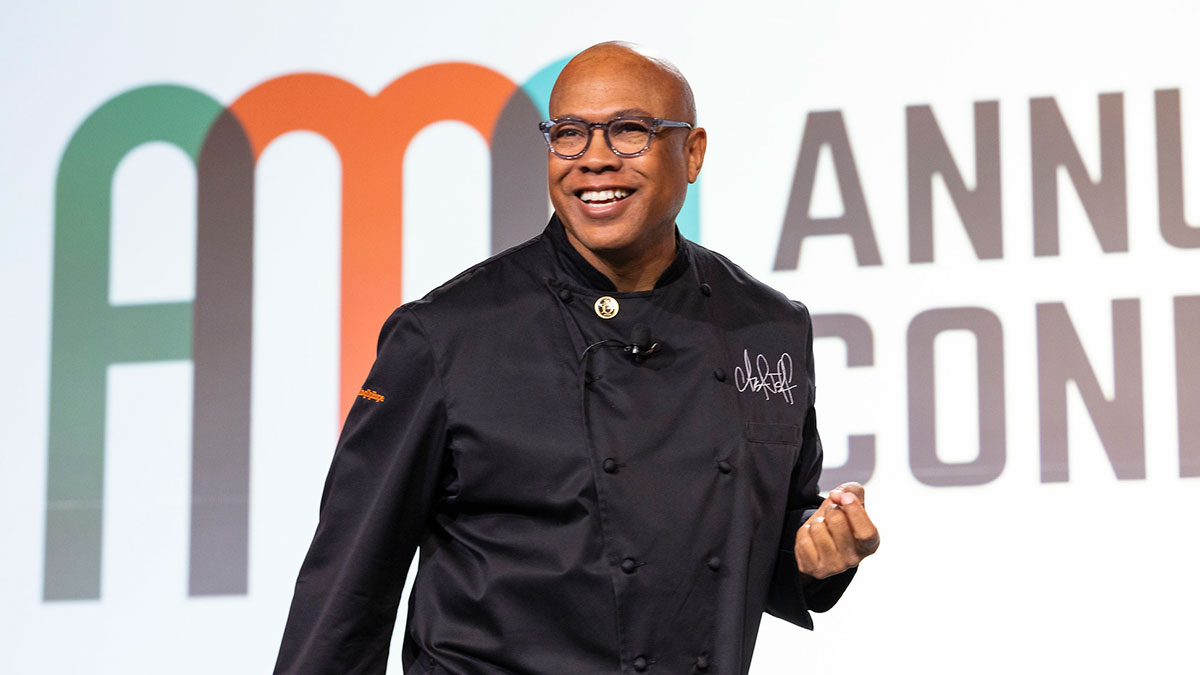By: Melaina Lewis, Manager, Communications, Food Marketing Institute
 Our industry is experiencing near constant change and innovation coming from multiple directions, most notably technological innovations, new competition, and changing consumer behaviors. The organizational chart of food retail has shifted with the consumer at the top, according to U.S. Grocery Shopper Trends. In an industry that’s expanding its roles in technology, communications, marketing, data analytics, and order fulfillment, how will we prepare ourselves and future leaders in food retail to meet the changing format? Last week at Future Leaders eXperience, nearly 400 attendees challenged their leadership skills and perception of food retail to bring new strategies to life.Here are a few key takeaways:
Our industry is experiencing near constant change and innovation coming from multiple directions, most notably technological innovations, new competition, and changing consumer behaviors. The organizational chart of food retail has shifted with the consumer at the top, according to U.S. Grocery Shopper Trends. In an industry that’s expanding its roles in technology, communications, marketing, data analytics, and order fulfillment, how will we prepare ourselves and future leaders in food retail to meet the changing format? Last week at Future Leaders eXperience, nearly 400 attendees challenged their leadership skills and perception of food retail to bring new strategies to life.Here are a few key takeaways:
1. Food Retail’s Organizational Chart of the Future Looks Different
- The consumer is at the top of the organizational chart.
- Customer-facing team members are the most important and they are the glue that holds the customer and business together.
- The organization is there to support the customer-facing team members.
2. Food Retail’s New Leadership Hierarchy is Collaborative
- Transparency is critical.
- We will need to train people to be entrepreneurial and to be confident in their own ability to lead.
- Our teams must fail fast and adjust, make smart decisions quickly, maintain a constant focus on leveraging digital, and never lose focus on providing the best service for customers.
- Latch onto your learnings to be successful. Accept and be able to provide feedback to your peers and leadership.
3. Food Retail’s New Hierarchy is More Diverse and Team Oriented
- Like our consumers, our industry’s employees are more diverse than ever.
- Diversity means many things, including talent diversity. Successful teams will be diverse in thought, gender, ethnicity, race, backgrounds, ideas and more.
- Diversity requires new skills in communication and team building.
4. Winning Organizations Will Have Engaged Work Cultures
- Engaged cultures make the difference.
- Positive cultures require integrity, respect and encouragement.


 Industry Topics address your specific area of expertise with resources, reports, events and more.
Industry Topics address your specific area of expertise with resources, reports, events and more.
 Our Research covers consumer behavior and retail operation benchmarks so you can make informed business decisions.
Our Research covers consumer behavior and retail operation benchmarks so you can make informed business decisions.
 Events and Education including online and in-person help you advance your food retail career.
Events and Education including online and in-person help you advance your food retail career.
 Food Safety training, resources and guidance that help you create a company food safety culture.
Food Safety training, resources and guidance that help you create a company food safety culture.
 Government Affairs work — federal and state — on the latest food industry policy, regulatory and legislative issues.
Government Affairs work — federal and state — on the latest food industry policy, regulatory and legislative issues.
 Get Involved. From industry awards to newsletters and committees, these resources help you take advantage of your membership.
Get Involved. From industry awards to newsletters and committees, these resources help you take advantage of your membership.
 Best practices, guidance documents, infographics, signage and more for the food industry on the COVID-19 pandemic.
Best practices, guidance documents, infographics, signage and more for the food industry on the COVID-19 pandemic.
